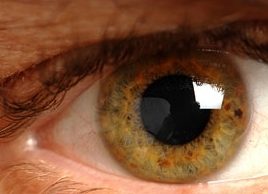Cataracts
Cataracts are permanent once established. But the opaque contents of the lens capsule can be removed to restore vision.

Source: Adapted from Looking After Your Body: An Owner’s Guide to Successful Aging, Reader’s Digest; Family
What are cataracts?
A cataract is a painless clouding of the internal focusing lens of the eye. The condition usually progresses gradually and leads to a misting of vision, change in the perception of colours, and short-sightedness.
Cataracts are permanent once established. But the opaque contents of the lens capsule can be removed to restore vision. The lens capsule remains transparent. Cataracts that are left alone for many years may eventually cause the capsule to rupture and lead to inflammation within the eye or glaucoma. This problem, once common, is now rare due to advances in cataract treatment.
Who is at risk for cataracts?
Most cataracts occur in people over the age of 70. It is usual for both eyes to be affected, often to different degrees. When the affected eye is otherwise healthy, full vision can almost always be restored by surgery.
However, some cataracts are congenital (present at birth). Doctors shine a light into the eyes of newborn babies to make sure that there is no whitening of the lens. Injury with a blunt object can sometimes result in a cataract. Typically this forms a star-shaped pattern, known as a stellate cataract. Long-term use of some drugs, such as steroids, may lead to cataracts developing. As well, some diseases increase the risk of cataracts. An example is diabetes, which may cause a snowy appearance in the lens or speed up the ageing process that causes cataracts.
Treatment for cataracts
What a doctor or optometrist may do:
- Check your vision with a test chart.
- Examine your eyes with an ophthalmoscope, a viewing instrument that allows examination of the inside of the eye, or a slit-lamp, an illuminated microscope used to make a detailed examination of the interior structures of the eye.
- Refer you to an ophthalmologist, a doctor who specializes in eyes.
- Treatment is by surgery and involves the removal of the opaque lens material and its replacement by a tiny plastic lens of high optical quality. The decision to treat is usually based upon the extent to which the cataract is affecting your lifestyle.
The outlook for treated cases of cataract is excellent: complications are uncommon and good vision is usually restored. If some clouding recurs after a few months the ophthalmologist can treat the capsule with a laser to leave it permanently clear.
Prevention of cataracts
- Control the damage. Research shows that antioxidants block free radicals (unstable oxygen molecules) from accumulating in the eye, where they can cause cataracts. Good food sources are citrus fruits, strawberries, purple grapes, blueberries, broccoli, tomatoes, cantaloupe, red and green peppers, corn, carrots, and dark-green leafy vegetables. Foods that contain selenium, iron, zinc, niacin, thiamine (vitamin B1), and riboflavin (vitamin B2) also guard against free-radical damage. Good food sources include meat, poultry, seafood, soybeans, fortified cereals, legumes, potatoes, eggs, milk, and cheese. Foods rich in vitamin A—which promotes normal vision—include beef liver, egg yolks, and yellow and dark-green leafy vegetables.
- Have a bowl. Many of today’s cereals are fortified with vitamins. Look for ones with close to the recommended daily allowance of nutrients you don’t get enough of through diet.
- Get checked. If you are between ages 40 and 59, have a complete eye exam every one to two years. People over age 60 should be checked annually.
- Take a multivitamin. It can’t hurt, especially if you don’t eat the recommended five servings of fruits and vegetables per day.
- Consider C. Several studies suggest that taking vitamin C for at least 10 years can prevent cataracts. But dosage recommendations range from 250 to 1,250 mg a day. Ask your doctor for advice.
- Look to A and E. Vitamin A can help support healthy vision. Vitamin E, like other antioxidants, may help prevent cataracts. In a four-year study, researchers found that vitamin E decreased the risk of developing a cataract by 50 percent. A safe dosage is 200 IU per day.
- Protect your eyes. Ultraviolet light causes free-radical formation. Wear sunglasses and a visor or wide-brimmed hat on sunny days. Shop for sunglasses that filter out at least 99 percent of the harmful UVA and UVB rays, a feature available in both high-priced and less expensive pairs. If you work on do-it-yourself projects or participate in sports that might cause an eye injury, be sure to wear safety glasses.
- Control diabetes. Uncontrolled diabetes can lead to various eye diseases, including cataracts—and even blindness.
- Stop smoking. Another reason to quit: People who smoke have a much higher incidence of cataracts and develop cataracts about 10 years earlier than nonsmokers.
- Steer clear of toxins. Guard against exposing your eyes to toxic substances and radiation from X rays or infrared light. Both have been implicated in the formation of cataracts.




